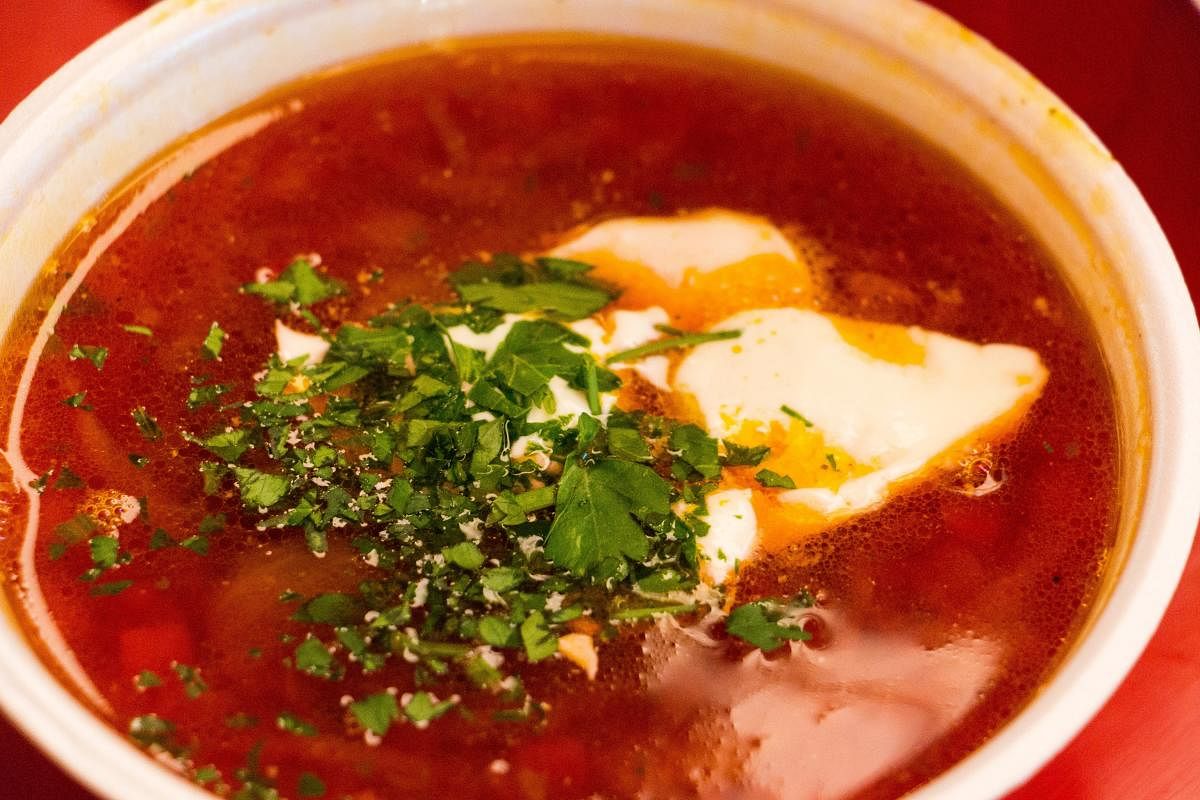

The Ukrainian war is a little over six months old and experts say it might drag on for some time to come. Meanwhile, other fronts of the war have opened up, the latest being the right to the signature soup called Borscht in eastern Europe.
Recently, UNESCO recognised the beetroot-based soup of Ukraine as an endangered cultural heritage. This stamp of approval, or recognition, has been hotly debated by Russia which claims that Borscht is native to their country. For the people of Ukraine meanwhile, it is something to cheer about in the current air of gloom.
According to www.britannica.com, “Although Borscht is important in Russian and Polish cuisines, Ukraine is frequently cited as its place of origin. Its name is thought to be derived from the Slavic word for the cow parsnip, or common hogweed .. or from a fermented beverage derived from that plant. The more-palatable cultivated beet eventually replaced the wild cow parsnip as the basis of the soup.”
War over food, or its original region/country is not new. Recently, the European Union’s top court ruled that Feta cheese, that much-loved addition for many a salad or hors d’oeuvres, has its parent in Greece. It reprimanded Denmark for not blocking some local companies from using the name for sales outside the EU. Feta has been designated as a traditional Greek product by the EU since 2002.
Greece has always insisted that Feta cheese is their very own heritage, the making of which goes back to 6,000 years. However, it is a Protected Designation of Origin (PDO) product, that is, only cheese made in some areas of Greece can be called ‘feta’.
Feta is produced in blocks and is firm to the touch. However, it can crumble when cut and has a creamy mouth feel.
The cheese is made with milk from sheep and goats raised on local grass. These particular regions lend the cheese its unique characteristics. Feta’s taste is slightly tangy and sharper when it is made with sheep’s milk, but milder when combined with goat’s milk.
The name ‘feta’ (slice) started to be used by Greeks in the 17th century. It probably refers to the practice of slicing up cheese to be placed into barrels or to the method of cutting the cheese into thin slices to serve on a plate.
According to Homer’s Odyssey, one-eyed Cyclope Polyphemus, a giant and shepherd, was the first to prepare cheese and more specifically, feta cheese. Polyphemus was carrying the milk that he collected from his sheep in lambskins of animals, until one day he realised that the milk had curdled and had taken a solid form.
Ancient Greeks, using the same general technique of storage in brine, produced a type of feta from sheep’s milk. Feta finds first recorded in the Byzantine Empire, under the name prosphatos (‘recent’, or fresh), and was associated specifically with Crete. An Italian visitor to Herakleion of Crete in 1494 describes the feta storage in brine.
The war over a beloved food item or cuisine would not be unfamiliar to the people living in eastern India and of a ‘bitter’ food war, over a sweet! Rosogolla, the spongy cottage cheese balls swimming in sugar syrup, is a favourite with Bengalis anywhere in the world and others as well. The history of its ‘accidental’ making is attributed to Nabin Chandra Das, the legendary forefather of the well-known sweetmeat maker K C Das family.
For long, like the Durga puja, rosogolla has been synonymous with Bengal, be it in Bollywood films with comedian Asit Sen gleefully gulping down a number of them at a time, or in literature. But some years ago Odisha claimed that rosogolla, in fact, was offered in the Lord Jagananth temple in Puri from the 12th century onwards and so it could not be called of Calcutta/Bengal origin.
Arguments and counter-arguments in courts followed and ultimately in 2017, Bengal was accorded the GI (Geographical Indicator) status for Banglar Rosogolla, which is different in texture and taste from Odisha’s version. Who knows if another sword fencing would ensue around panta bhaat, the age-old fermented rice, a favourite with farmers on both sides of the Ganga i.e. Bangladesh and Bengal. The soaked rice, usually kept overnight, gets slightly fermented and is cooling for the body. Hence farmers prefer to have it in the morning before setting out to the field in the hot summer. Usually, the rice is eaten with a spoonful of mustard oil, slices of onion and green chillies. This dish is equally popular in the rustic homes of Assam where it is known as poita bhaat and Odisha (pakhala).
Lately, the humble panta bhaat has been featured even in star hotel menus. In Bangladesh, it has become almost de rigueur to eat panta bhaat and hilsa fish fry on the Bengali New Year’s Day in April. For foodies, the slogan would be, as long as you get authentic food, who cares for the wars?
Trans World Features